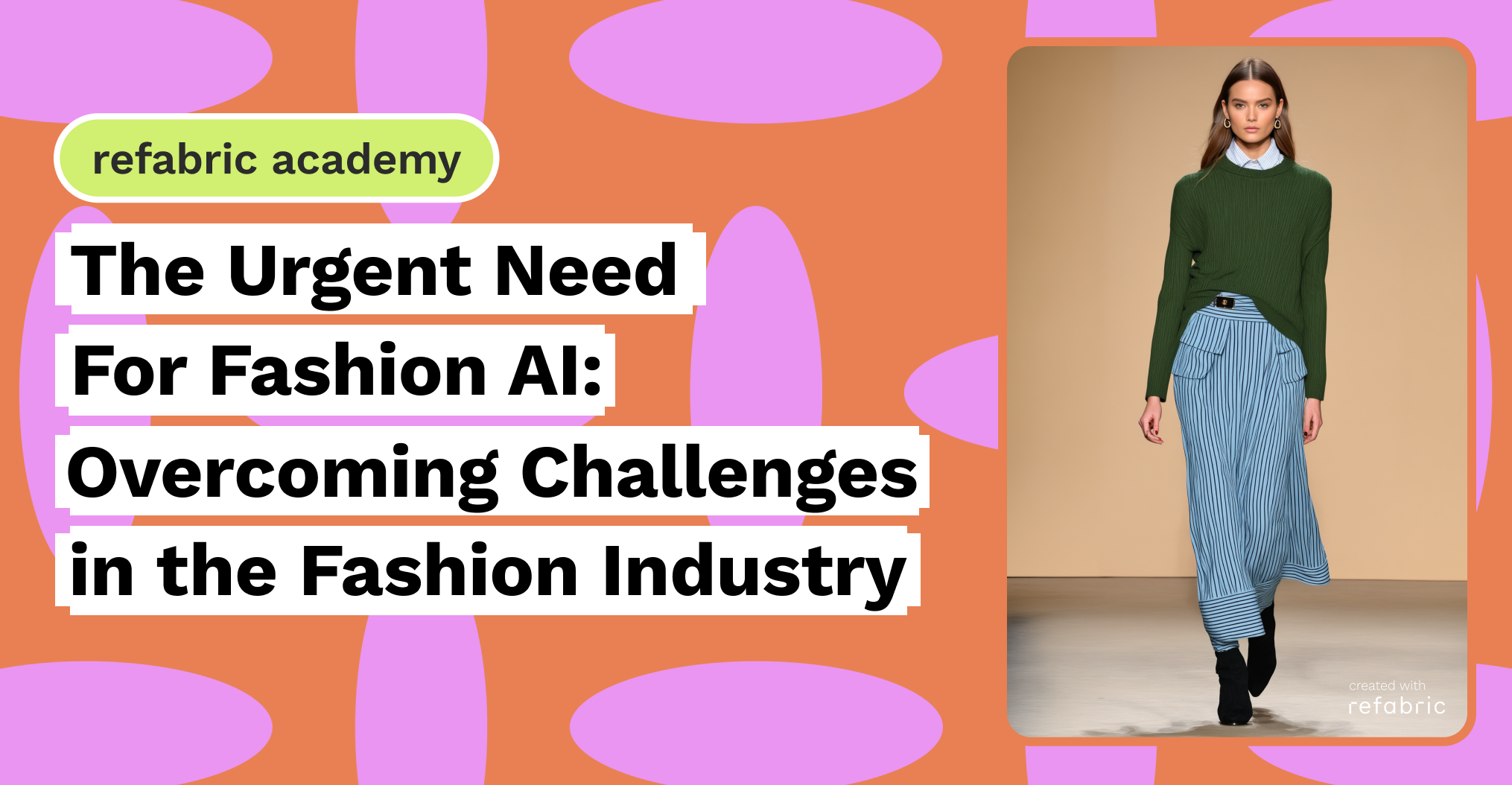Fashion AI offers a range of innovative solutions that address many of the industry’s most pressing challenges. By leveraging artificial intelligence and machine learning, brands can optimize everything from trend forecasting and design creation to production and retail, paving the way for a more efficient, responsive, and sustainable future in fashion.
Sustainability Through AI-Driven Efficiency
One of the greatest challenges the fashion industry faces today is sustainability. With the environmental impact of clothing production under intense scrutiny, fashion brands are being pressured to adopt more eco-friendly practices. Fast fashion has exacerbated the problem, leading to overproduction, excessive waste, and exploitation of natural resources. In an industry where trends are fleeting and seasons shift rapidly, keeping up while minimizing waste is a delicate balancing act.
Fashion AI can play a crucial role in advancing sustainability efforts within fashion. AI-powered tools can analyze massive amounts of data to identify patterns in consumer preferences, material performance, and production efficiency. This enables brands to make more informed decisions, reduce waste, and optimize resource allocation.
Accurate Demand Forecasting and Inventory Management
Another pressing challenge is inventory management. Many fashion brands struggle with forecasting demand, leading to either overstock or stock shortages. Overstocked items may end up in landfills, adding to the industry’s waste problem, while understock can result in missed sales opportunities and customer dissatisfaction. Accurately predicting which products will resonate with consumers, especially as trends shift quickly, is essential to maintaining profitability and sustainability.
Fashion AI excels at processing large datasets and recognizing patterns, making it an invaluable tool for demand forecasting. AI algorithms can analyze historical sales data, social media trends, and consumer behavior to predict which styles and products will be most popular in upcoming seasons. This enables fashion brands to better plan their production runs and avoid overstock or stock shortages.
With fashion AI, brands can take a proactive approach to inventory management, reducing the risk of markdowns, stockouts, and waste. Retailers can also adjust their stock levels in real time based on AI-generated insights, allowing for a more agile and responsive supply chain.
Accelerating Speed to Market with Fashion AI
The fashion industry is also grappling with speed to market. Fast fashion giants like Zara and H&M have set a high bar for delivering new styles to consumers in record time. Traditional fashion houses, with their long lead times from design to production, struggle to keep up. Delays in trend adoption can result in lost market share to more nimble competitors, leaving slower-moving brands behind.
Fashion AI can drastically reduce the time it takes to bring new designs to market. AI-driven design tools can automatically generate patterns and concepts based on real-time trend analysis, allowing designers to create collections faster than ever before. This gives brands the ability to introduce new styles more frequently, keeping them competitive with fast fashion retailers.
By automating time-consuming tasks like pattern-making and material selection, AI frees up designers to focus on the creative aspects of fashion, while also reducing the time it takes to go from concept to production. With AI in the design room, brands can accelerate their design cycles and deliver new products to consumers faster, without sacrificing quality.
Personalization at Scale
Lastly, consumer personalization has become a growing expectation. Today’s consumers want more than mass-produced products; they crave personalized experiences and unique fashion pieces that reflect their individual tastes. However, personalizing fashion at scale has historically been a daunting and expensive process. Brands must find ways to meet the demand for customization while keeping costs and production times under control.
One of the most exciting applications of AI in fashion is personalization. Fashion AI can analyze consumer data to understand individual preferences and style trends, allowing brands to offer tailored recommendations and personalized shopping experiences. For example, AI can curate product suggestions based on a customer’s past purchases, browsing history, and social media activity, enhancing their overall shopping experience.
Moreover, AI can help brands offer customized products, such as made-to-order garments, without the need for large-scale manual processes. This allows for personalization at scale, making fashion more inclusive and adaptable to consumer needs while minimizing the risk of overproduction.
To sum up, fashion AI is not just a trend—it’s a necessity for the industry to stay competitive and adapt to the changing landscape. As brands face mounting pressure to be more sustainable, efficient, and responsive, fashion AI offers innovative solutions to streamline operations, improve design processes, and enhance the customer experience. By embracing AI, the fashion industry can overcome its biggest challenges and unlock new levels of creativity and sustainability. The future of fashion lies in the power of AI-driven innovation.
